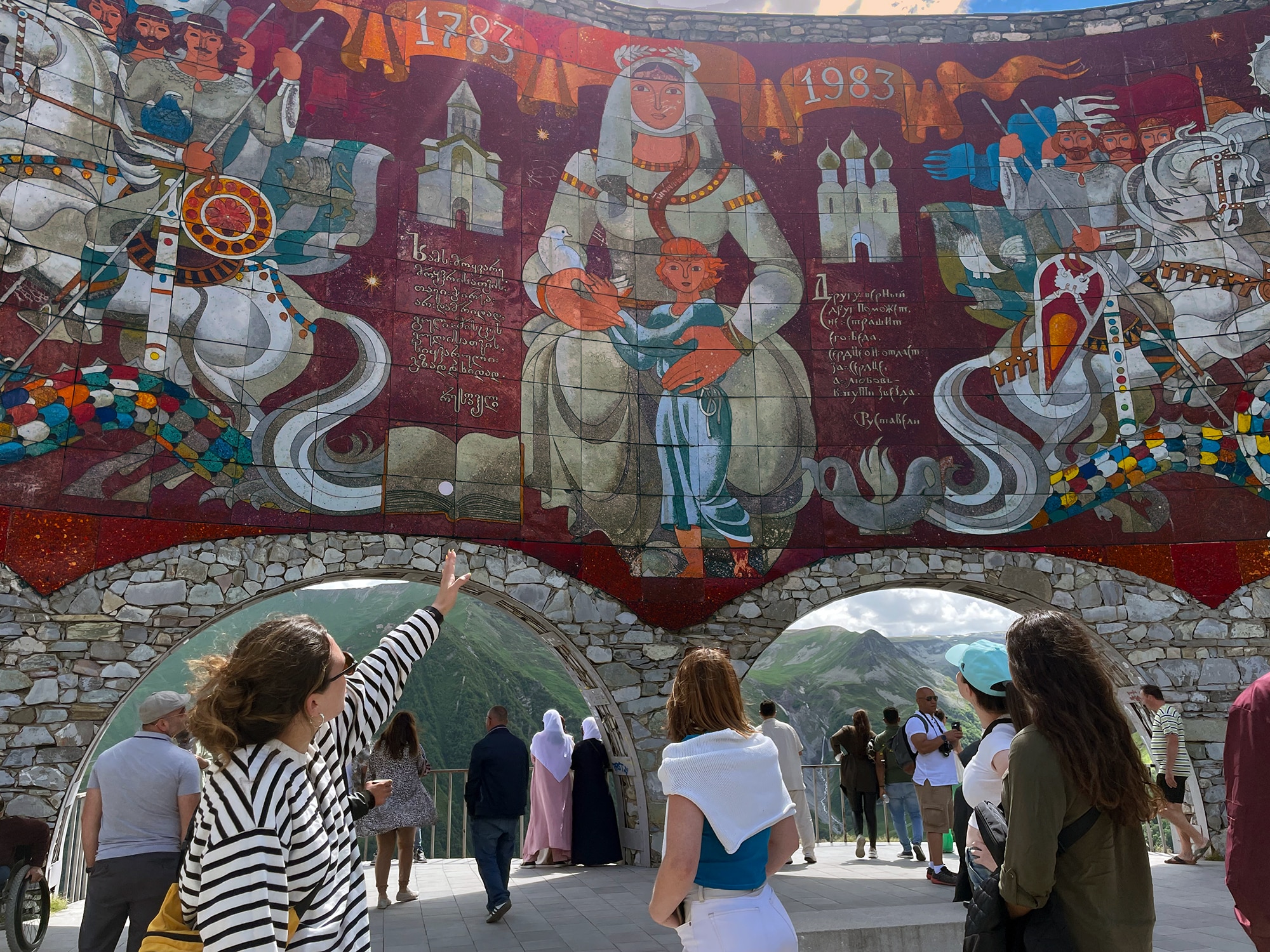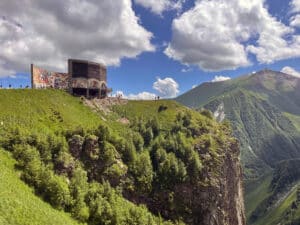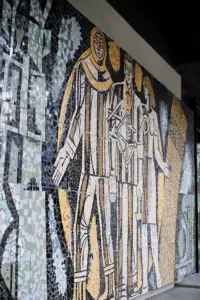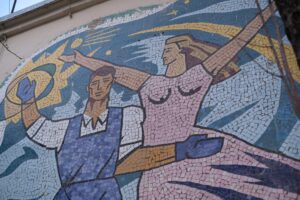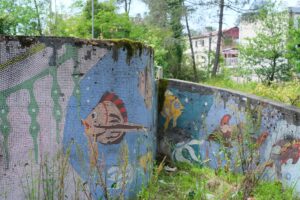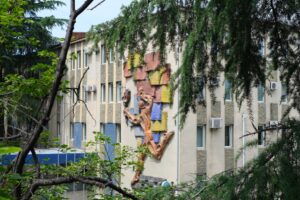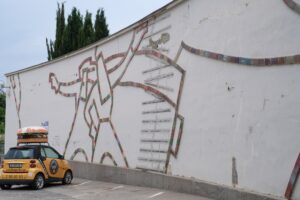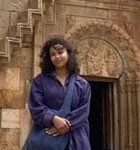I can’t put my finger on what sparked my interest in Soviet-era mosaics, but at this point, I’m obsessed. As someone who grew up in the US, it’s a rather foreign thing to see the sides of entire buildings decked out in brightly colored scenes made of tiles. It also contradicts what many people believe is Soviet architecture: dull, boxy, and sometimes dilapidated buildings. I’ve done research on mosaics just due to my own interest in them, and through this fascination, I feel I’ve come to a better understanding of the history and significance of mosaics in the Soviet Union, as well as their place in Post-Soviet countries.
For better or worse, mosaics were an ingenious component of Soviet propaganda. Mosaics are much more permanent than any poster or painting/mural could be. Mosaics, being made out of tiles and incorporated into permanent structures such as buildings and bus stops, don’t wear or fade like a mural or a poster. This made them better for disseminating information in a lasting way.
Mosaics became popular in the Soviet Union in the 1970s after a period when any architectural elements that didn’t have any sort of utility were discouraged. They became a way to beautify and differentiate buildings that were largely constructed with all the same materials and the same basic designs.
Because the Soviet period was a time of oppression for many, both of local culture and freedoms, many people hold a negative sentiment towards any Soviet relics. This is especially true in Georgia. However, many people, including Georgians, find value in the mosaics that are left, despite some of the negative connotations.
Nini Palavandishvili, for instance, has published Mosaics of the Soviet Period in Georgia, which attempts to document the artworks while encouraging public discussion and awareness of efforts to preserve them. Geoair is a local art group in Georgia that has published both a map of Soviet-era mosaics and also published a book, Tbilisi: It’s Complicated, to encourage an open consideration of the city’s Russian and Soviet architectural heritage. There is a Facebook page (although now mostly dormant) run by Nino Siradze. There are also resources available from esteemed Western sources such as Architectural Digest.
I also believe that mosaics are always worth a roadside stop, or an outing in their own right. Students wanting to learn more about Georgia and its history, but who don’t know where to start can easily find inspiration in one of the plentiful mosaics that they may come across.
Because many mosaics in the Soviet Union were made by local artists, they often were centered around local themes. Though I haven’t seen these specific mosaics myself yet, in Georgia there are many mosaics in the sources documented above that present, for instance, Georgia’s history of tea production in the Soviet Union. Tea production is today making a comeback and is again a proud part of the Georgian economy. Other mosaics depict significant figures in Georgian history or elements of Georgian culture such as traditional clothing. Many mosaics in the western regions aptly incorporate fish or Poseidon themes due to their proximity to the Black Sea as well as Georgia’s connections to Greece, particularly in ancient times when the land that we now call Georgia figured prominently in Greek history and myths. There are plenty of culturally significant, historically relevant, and simply fun mosaics to see across Georgia.
Many people see the value in mosaics for the contemporary societies that they inhabit. In an article published by the South Caucasus branch of the Heinrich Boll Stiftung Foundation, the author claims that mosaics in the Soviet Union were generally “national in form, socialist in content.” This, as I mentioned before, references that mosaics often had local motifs, designed by local artists, but were nonetheless also meant to exhibit communist ideals. The author believes that despite the communist messages, which were more often than not obligatory, mosaics were made by artists who deserve to be remembered for their work. In another article in the magazine New Eastern Europe, author Natalia Mosashvili echos the article from the Boll Foundation and also claims that the erasure of mosaics in Tbilisi in particular is a misguided attempt to simply erase Georgia’s time in the Soviet Union from the collective memory.
My personal opinion also is that there is value in old mosaics and in making new ones too. Though there are multitudes of more pertinent issues to be focused on in any society, beautification can be of value as well. When possible, mosaics are a form of art that can be added to public spaces to express and preserve local cultural heritage.


